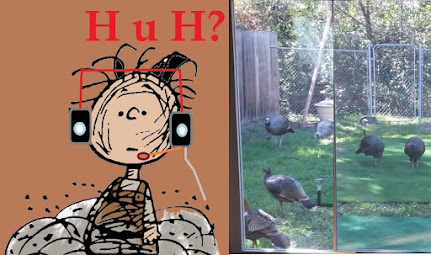The weekend before Field Day always brings us the All Asian Cw contest. For the
last several years, the game has been to dual-OP this contest: For WQ6X and as an
operator (18-hours for 2024) for NX6T's multi-single. One year, I actually ran an All Asian
Triple-OP by registering W6A for a 3rd run that weekend.
Because the focus is Asia for the most part, antennas can be pointed more-or-less 305 azimuth degrees and left there. A secondary tower at the Anza location offered a KT-36 yagi which was
more-or-less pointing to ~12-degrees offering over-the-pole access to Western Asia (4X4, P3, etc.)
Prior to the All Asian weekend, various solar storms ravaged Earth's upper atmosphere.
For Friday's 5pm (PDT) contest start, 15-meters was WIDE OPEN, remaining open to well
past 05:00z (10pm) both evenings. 20-meters seemed to have an opening nearly all 24-hours.
The REAL disappointment was 40-meters and we don't have OTH radar (on 7.033) to blame for
lack of Asian participation. 80-meters too was a relative disappointment and we don't get to blame
a funky JA band plan (like they have on Ssb) for their lack of participation.
One single 10-meter opening almost happened as a fluke, Out of nowhere a CQ call on 28028.28 @02:00z - late for 10-meters - produced a run of 75+ QSOs; a good thing considering 10-meters
on Sunday was all but a no-show.
The secret to this year's NX6T success at the WA6TQT super station was running a mult station (STN-1) in addition to a Run station (STN-2) Because 160 - 20 meters were open during NX6T's
post-midnight hours, the success secret was watching the bandmap for new mults, switching bands
to pick them up, immediately followed by calling CQ to fill out the rest of the 10-minute band time requirement.
In between shifts at NX6T's million-point multi-OP, WQ6X found time to run a casual QRP operation remotely from KN6NBT's QTH in Ramona. The signal differences between Ramona and Anza were quite striking. Influencing factors include Anza's geographical location, not to mention stacked arrays vs. a 3-el Stepp-IR @ only 55' high at the Ramona hilltop location.
By Sunday, NX6T had largely run out of stations to work on 20 & 15 meters.
WQ6X had a plethora of stations available to work, if only those stations in Asia could hear me. Nevertheless, when it was all over, it looks as if NX6T and WQ6X took a first place in their related operating categories.
DiD YOU work the All Asian Contest?
How many Asian multipliers made it to YOUR LoG?

.Jpg)

.Jpg)




.Jpg)


.Jpg)





.Jpg)











